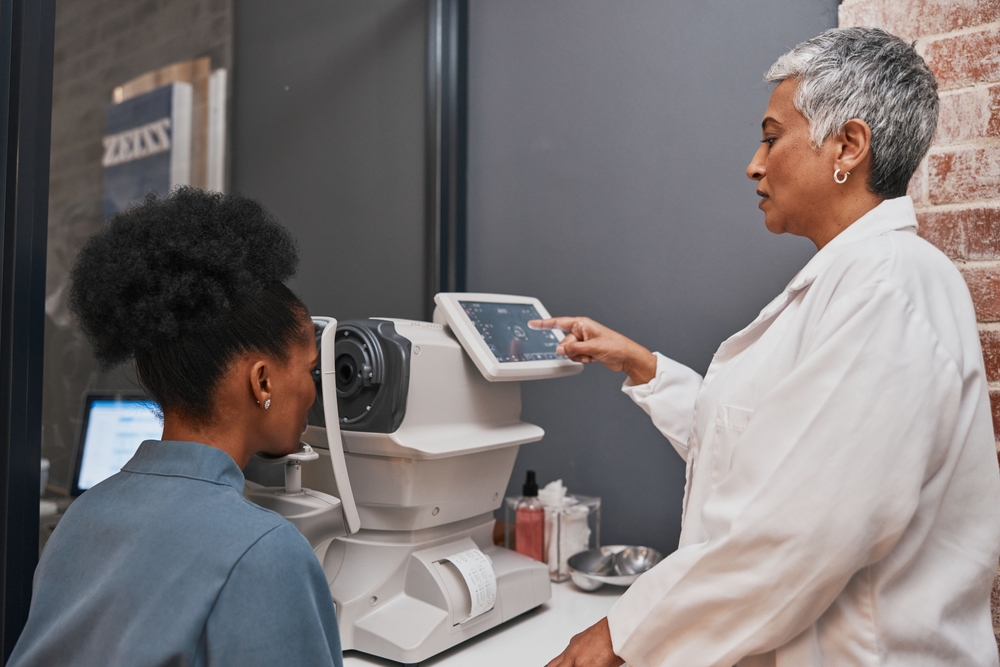
When it comes to eye health, there are different types of exams designed to meet specific needs. Two common types are regular eye exams and contact lens exams. While both involve checking the health of your eyes, the purpose and process of each vary. Understanding the difference can help you make informed decisions about your vision care needs.
Regular Eye Exam: The Foundation of Eye Health
A regular eye exam is a comprehensive check-up for your overall eye health and vision clarity. It involves several key components:
Vision Testing: This checks your ability to see clearly at various distances, often resulting in a prescription for glasses if needed.
Eye Health Evaluation: Your eye doctor examines the internal and external structures of your eyes for any signs of diseases such as glaucoma, cataracts, or macular degeneration.
Eye Movement and Coordination: This part assesses how well your eyes work together, ensuring proper alignment and tracking.
Refraction: This is the process used to determine your precise prescription for corrective lenses.
A regular eye exam is typically recommended once a year for most individuals, whether or not you wear glasses or contacts. It ensures that your eyes are healthy and helps detect any early signs of vision issues or eye conditions.
Contact Lens Exam: Specialized for Contact Lens Wearers
If you wear or want to start wearing contact lenses, you will need a contact lens exam. This exam includes everything in a regular eye exam but goes further to ensure contact lenses are the right option for you. Here’s how it differs:
Corneal Measurement: Contact lenses sit directly on the surface of your eyes, so your eye doctor will measure the curvature of your cornea to determine the best fit. A poor fit can lead to discomfort, blurred vision, or even damage to your eyes.
Tear Film Evaluation: Since contacts rest on your eyes for extended periods, your doctor will assess the moisture level in your eyes. This ensures that your eyes can comfortably tolerate contact lenses without becoming excessively dry or irritated.
Contact Lens Fitting: The doctor will also fit you with a pair of trial lenses to evaluate how they sit on your eyes. They may have you wear them for a short period to assess their comfort and vision clarity before finalizing your prescription.
Prescription for Contacts: Unlike glasses, contact lens prescriptions are more detailed. They include the lens diameter, base curve, and material type. Contact lenses need to be precisely tailored to your eyes to ensure proper vision correction and comfort.
Which Exam Do You Need?
If you’re not interested in wearing contacts, a regular eye exam will be sufficient to maintain eye health and get an updated glasses prescription if needed. However, if you wear contacts or are considering them, you will need a contact lens exam.
It’s also worth noting that your contact lens prescription can differ from your glasses prescription. This is because contact lenses sit directly on your eye, while glasses are positioned slightly away from it. If you switch between the two, make sure you have updated prescriptions for both.
Optimizing Your Vision and Eye Health with Eyecare Galleria
Whether you need a regular eye exam or a contact lens exam depends on your vision needs and preferences. Both play a crucial role in maintaining clear vision and eye health. At Eyecare Galleria, we offer comprehensive services to ensure that your eyes stay healthy and your vision is sharp—whether you wear glasses, contacts, or both.
Schedule your next eye exam with Eyecare Galleria to see the world with clarity. Visit our office in Brentwood, California, or call (925) 240-8520 to book an appointment today.










